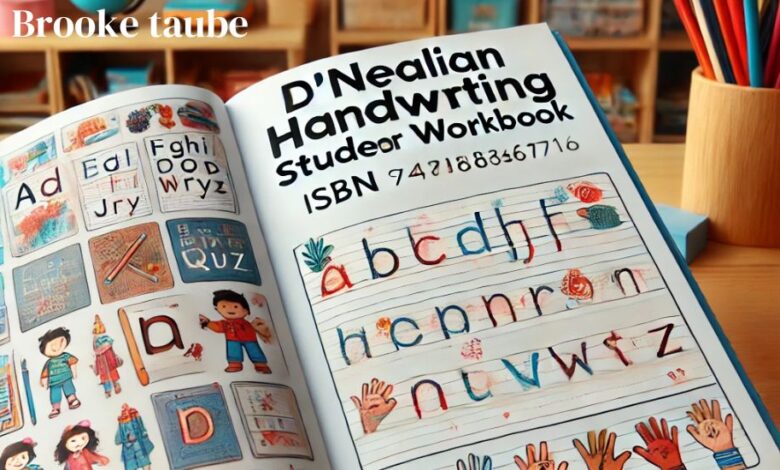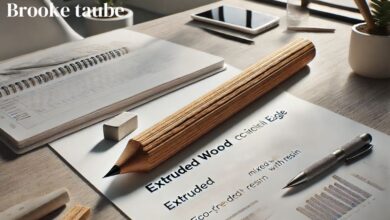Exploring Isbn13: 9781418361716 A Comprehensive Guide to the D’Nealian Handwriting Student Workbook
Introduction

The educational landscape is filled with various tools designed to enhance learning, especially at the foundational levels. One such tool, recognized widely for its effectiveness, is the “D’Nealian Handwriting Student Workbook” (Isbn13: 9781418361716). This workbook, specifically designed for kindergarten students, is part of the broader D’Nealian handwriting curriculum that introduces children to handwriting using a method that bridges the gap between manuscript and cursive writing.
In this article, we delve into the specifics of “Isbn13: 9781418361716,” discussing its significance, the D’Nealian handwriting system, and how this workbook plays a critical role in the early stages of literacy and motor skill development for young learners.
Table of Contents
ToggleThe Purpose Behind “Isbn13: 9781418361716”
The D’Nealian Handwriting Student Workbook, identified by Isbn13: 9781418361716, is a fundamental part of early childhood education. Its primary aim is to introduce kindergarteners to handwriting, with a special focus on helping them form letters using a continuous stroke method. Unlike traditional block-style manuscript handwriting, D’Nealian handwriting offers a smoother transition to cursive writing, a skill many students struggle with later in elementary school.
This workbook is consumable, meaning students write directly into it, making it a hands-on tool for practicing letter formation, spacing, and alignment. As part of a structured curriculum, the D’Nealian method’s approach to writing makes it easier for children to learn and develop fine motor skills at an early age.
What Makes the D’Nealian Handwriting System Unique?
Developed by Donald N. Thurber in the 1970s, the D’Nealian handwriting system was designed to simplify the process of learning how to write. The traditional “ball-and-stick” method for teaching writing was found to be cumbersome and confusing for many young students, especially when they transitioned to cursive writing. Thurber’s approach focused on a more fluid style where letters are formed with slight slants and curves, closely resembling cursive forms.
The key feature of the D’Nealian handwriting system is the continuous stroke technique. This technique allows children to write without frequently lifting the pencil from the paper, reducing the number of stops and starts that can interrupt the flow of writing. The workbook (Isbn13: 9781418361716) teaches students this method, encouraging them to form letters that are easier to connect later when they begin learning cursive.
Inside the “Isbn13: 9781418361716” Workbook
The D’Nealian Handwriting Student Workbook for kindergarten (Isbn13: 9781418361716) is structured to provide a step-by-step guide to forming letters, beginning with basic strokes and progressing to more complex letter formations. The workbook includes sections dedicated to individual letters, numbers, and even simple words, allowing children to practice both print and pre-cursive writing. Each page in the workbook offers ample space for tracing letters, followed by freehand practice where students can apply what they’ve learned.
Additionally, the workbook incorporates various exercises that develop not only handwriting skills but also essential literacy skills such as letter recognition and sound association. By using this workbook, students can reinforce the relationship between written and spoken language, which is a critical aspect of early education.
The Benefits of Using “Isbn13: 9781418361716” for Kindergarteners
For kindergarten students, developing fine motor skills is a crucial part of their cognitive and physical growth. The D’Nealian Handwriting Student Workbook (Isbn13: 9781418361716) provides a structured, systematic approach to help young learners develop the dexterity and control needed for handwriting. Writing exercises that focus on continuous strokes help improve hand-eye coordination, muscle memory, and concentration.
Moreover, the workbook’s design fosters independent learning. As students progress through each exercise, they gradually become more confident in their ability to write. This sense of achievement not only boosts their self-esteem but also prepares them for more advanced writing tasks in higher grades.
In the long run, the skills gained from using this workbook extend beyond handwriting. Improved motor skills lead to better performance in other areas such as drawing, cutting with scissors, and using tools, all of which are important in everyday life and future academic success.
Why Choose the D’Nealian Method Over Other Handwriting Systems?
Educators and parents often wonder which handwriting system is best for young learners. The D’Nealian method, supported by materials like the “Isbn13: 9781418361716” workbook, offers several advantages over traditional handwriting systems. One of the biggest benefits is that it reduces the confusion children often face when transitioning from manuscript (print) writing to cursive writing.
The D’Nealian system’s use of slanted, cursive-like manuscript letters makes the shift to cursive smoother because students are already familiar with the shapes and strokes of the letters. This continuity prevents the frustration that some children experience when they are required to relearn letter formations entirely when they start cursive writing. The method promotes fluidity and efficiency, which can lead to improved handwriting quality over time.
Furthermore, the D’Nealian approach is designed with flexibility in mind. Children are not forced to follow rigid rules for letter formation, allowing them to develop their own style of writing within the framework provided. This flexibility can make the learning experience more enjoyable and less stressful for young learners.
The Role of “Isbn13: 9781418361716” in Early Literacy Development
The D’Nealian Handwriting Student Workbook (Isbn13: 9781418361716) does more than teach children how to write—it plays an essential role in their overall literacy development. Writing is one of the fundamental skills in literacy, and by learning how to form letters correctly, children are also strengthening their reading abilities. Research shows that children who are proficient in handwriting tend to have better reading skills, as both tasks require the integration of visual, motor, and cognitive processes.
By using the workbook, students get the opportunity to connect sounds with letters, which aids in phonics instruction. The process of writing each letter while associating it with its corresponding sound helps solidify the relationship between written and spoken language, a cornerstone of literacy education. This multi-sensory approach ensures that students are not only memorizing letter shapes but also understanding how they relate to words and meaning.
Conclusion: The Lasting Impact of “Isbn13: 9781418361716”
The D’Nealian Handwriting Student Workbook, identified by Isbn13: 9781418361716, is more than just a workbook—it’s a vital educational tool that supports the development of essential skills in young children. By introducing kindergarteners to the D’Nealian handwriting system, this workbook lays the foundation for future success in both writing and reading. Its methodical approach, based on continuous strokes and fluid movement, allows children to build fine motor skills while also gaining confidence in their ability to write.
As educators and parents look for effective resources to support early childhood education, the D’Nealian Handwriting Student Workbook stands out as a valuable asset. Its focus on making the learning process smoother and more enjoyable helps children stay engaged and motivated, ensuring that they develop strong writing habits that will benefit them throughout their academic journey. With its combination of structured lessons, hands-on practice, and emphasis on literacy, the workbook is an indispensable tool for any kindergarten classroom.
By integrating the D’Nealian handwriting system into early education, “Isbn13: 9781418361716” contributes to shaping confident, capable young writers who are well-prepared for the challenges of future learning.


